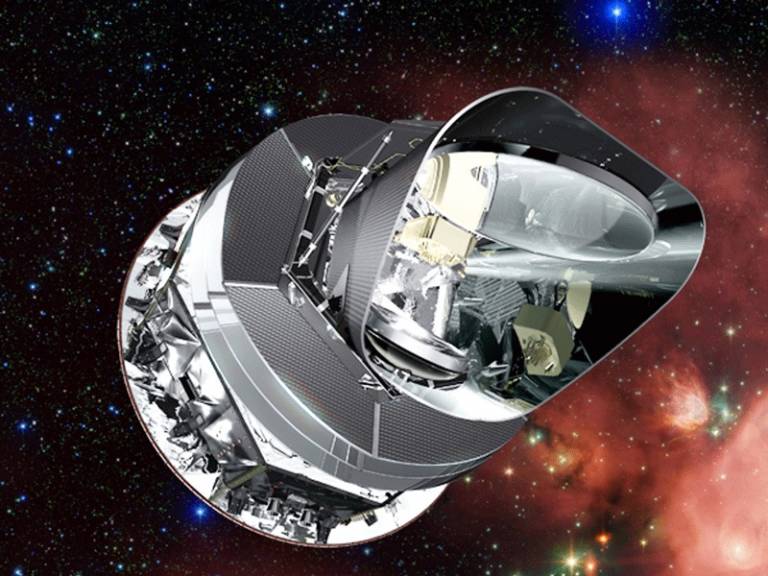The European Space Agency’s Planck satellite is the first European mission to study the origins of the universe. It surveyed the microwave sky from 2009 to 2013, measuring the cosmic microwave background (CMB), the afterglow of the Big Bang, and the emission from gas and dust in our own Milky Way galaxy. The satellite performed flawlessly, yielding a dramatic improvement in resolution, sensitivity, and frequency coverage over the previous state-of-the-art full sky CMB dataset, from NASA’s Wilkinson Microwave Anisotropy Probe.
Analysis of the Planck data is currently ongoing, with regular data releases. You can read below about contributions made by UCL researchers to these releases. Hiranya Peiris and Giorgio Savini in the Astrophysics Group, Jason McEwen (MSSL), and members of their research teams are involved in the Planck mission. More news can be found on the EarlyUniverse@UCL blog.
Latest News

Artist’s rendering of the Planck satellite with view inside the telescope shields. The focal plane unit is visible as the golden collection of waveguide horns at the focus of the telescope positioned inside the thermal shields (external envelope) which protect the telescope from unwanted stray light and aids the cooling of the telescope mirrors by having a black emitting surface on the outside and a reflective one on the inside. For reference, the Earth and Sun would be located far towards the bottom left of this picture. (Credit: ESA/Planck)
 Close
Close

